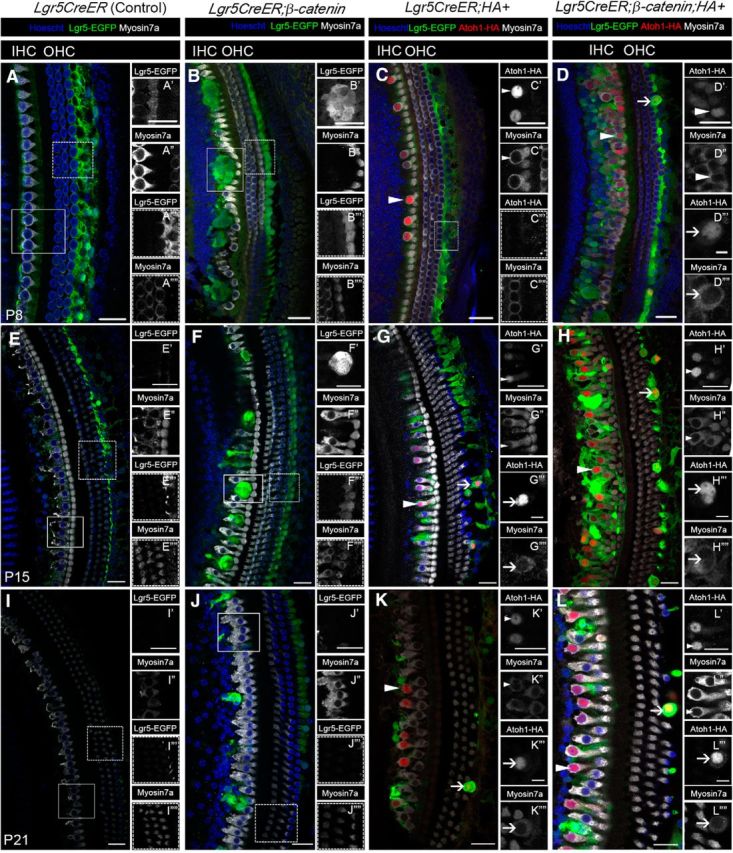Figure 2.

Lgr5+ cells differentiate into HCs in response to β-catenin and Atoh1. A–L, Confocal images of cochleae from Lgr5CreER (Control; similar phenotype observed in Lgr5CreER-negative;β-catenin;HA+) (A, E, I), Lgr5CreER;β-catenin (B, F, J), Lgr5CreER;HA+ (C, G, K), and Lgr5CreER;β-catenin;HA+ (D, H, L) mice that were induced with tamoxifen at P0-P1 and analyzed at P8 (A–D), P15 (E–H), and P21 (I–L). G, L, The optical sections do not show the entire third row of outer hair cells, although present. B, Lgr5+ cells only transiently proliferate and form foci in response to ectopic β-catenin at P8. C, Conversely, Lgr5+ cells differentiate into HCs (arrowheads) in response to Atoh1, but without apparent proliferation at P8. D, Replication foci from concurrent β-catenin and Atoh1 expression in Lgr5+ cells appear less defined (compared with β-catenin expression alone, B), suggesting an increased proliferation. In addition, Lgr5+ cells medial to the IHC and the third row of Deiters' cells lateral to the OHCs differentiate into HCs at P8 (D, arrowhead and arrow, respectively). The differentiation of the third row of Deiters' cells occurs at P8 only in the presence of β-catenin and Atoh1 (D, arrow). New HCs that formed medial to the IHC following Atoh1 alone or β-catenin and Atoh1 ectopic expression persist at P15 (G, H, arrowhead, respectively) and P21 (K, L, arrowhead, respectively). New HCs derived from the third row of Deiters' cells similarly persist at P15 (G, H, arrow, respectively) and P21 (K, L, arrows, respectively) following the same paradigm. L, At P21, the ectopic HCs adjacent to the endogenous IHCs have now formed an additional row of HCs. Scale bars, 25 μm. Scale bars: D″′, D″″, G″′, G″″, H″′, H″″, K″′, K″″, L″′, L″″, 10 μm.
